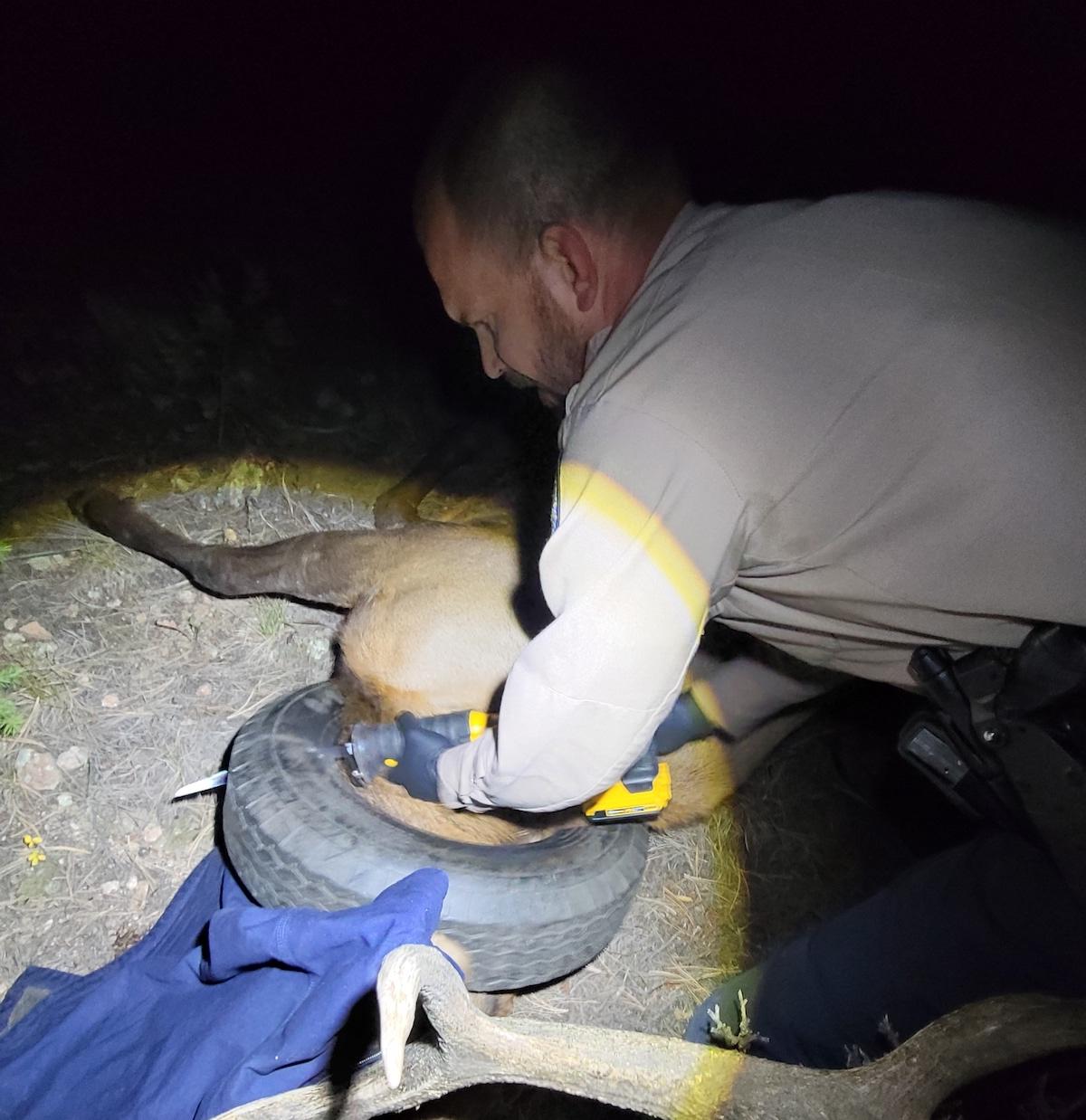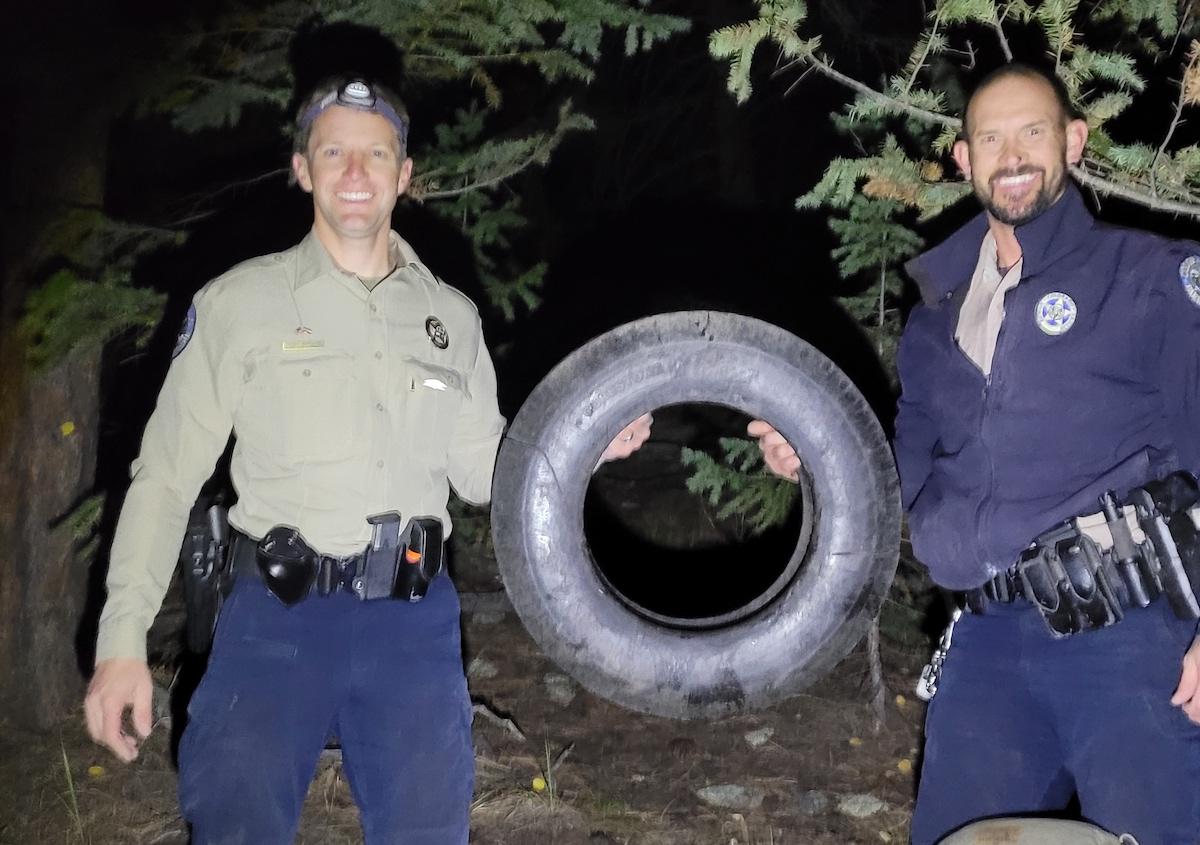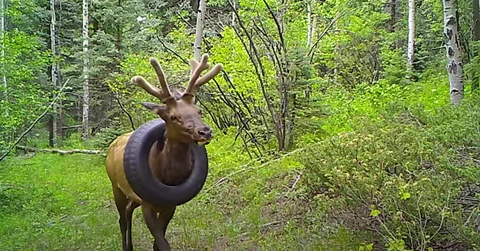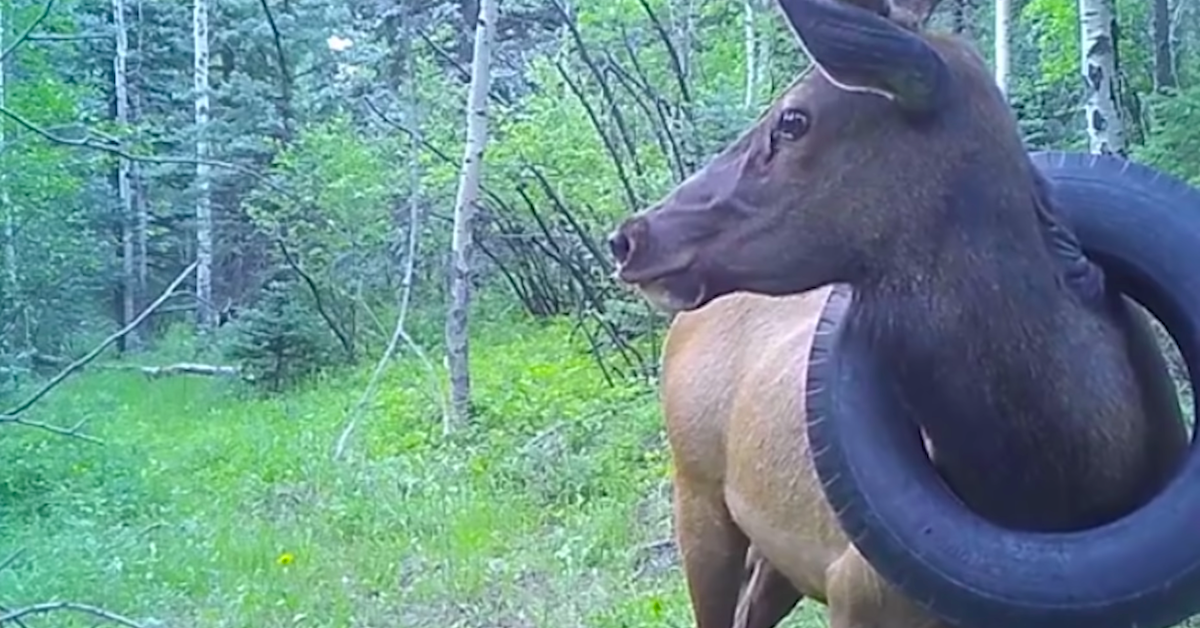Wild Elk Free From Tire Around His Neck After Over Two Years
Updated Oct. 12 2021, 11:59 a.m. ET
After more than two years, a wild elk with a tire around his neck has finally been freed — and it was no easy battle.
Colorado Parks & Wildlife (CPW) shared the news on Monday, Oct. 11, two days after a pair of wildlife officers managed to remove the tire from the 4.5-year-old bull elk’s neck.
If this story doesn’t inspire people to stop littering and start disposing of things like tires responsibly, we have no idea what will.
An elk with a tire around his neck is finally free.
In July 2019, a CPW officer named Jared Lamb spotted the wild bull elk, who was estimated to be around 2 years old at the time, with a tire around his neck while conducting a survey. For the last two years and three months, there have been several sightings of the wild elk in the wilderness between Colorado’s Park and Jefferson Counties, but the department had not been able to capture him to remove the tire until this week.
In fact, over the past week, CPW officers tried to tranquilize the elk four times — but things kept getting in the way, like branches or other elks. But on Saturday, when a resident of the area reported a sighting in Pine, Colo., officer Dawson Swanson arrived at the scene, and was able to spot the elk within a herd of about 40. At that moment, everything finally lined up for him to hit the elk with a tranquilizer dart.

“[Once] the bull was hit with the dart, the entire herd headed back into the thick timber. This is where I was able to find the bull,” Swanson said in a statement for CPW.
He then called fellow officer Scott Murdoch for backup. The two men tried to cut the tire off, but “weren’t able to cut the steel in the bead of the tire," Murdoch said. Ultimately, they had to cut the elk’s antlers so they could slide the tire off over his head. "Fortunately, the bull’s neck still had a little room to move,” Murdoch added.
“We would have preferred to cut the tire and leave the antlers for his rutting activity, but the situation was dynamic and we had to just get the tire off in any way possible,” he explained.

In addition to the steel in the tire making the process tricky, the tire was also filled with what the officers estimated to be about 10 pounds of wet pine needles and dirt. Combined with the tire itself, they estimated that the elk lost about 35 pounds during the “surgery.” And miraculously, the tire hadn’t done much superficial damage to the elk.
“The hair was rubbed off a little bit, there was one small open wound maybe the size of a nickel or quarter, but other than that it looked really good,” Murdoch noted. “I was actually quite shocked to see how good it looked.”
As soon as the tire was removed, the officers applied a reverse tranquilizer, and within a few minutes, the elk was up and doing just fine.
Littering can hurt wildlife — so it’s important to consider wildlife and dispose of trash responsibly.
CPW hopes this story will remind people — especially those who live on property that wild animals are near — to consider animals when decorating and furnishing their yards. Items including tires, hammocks, swings, clothing lines, cages, baskets, and sport nets can all pose a danger to wildlife.
This story also serves as a reminder to dispose of trash responsibly. There’s no excuse for littering, or even leaving trash or recycling outside without sealing it properly, as wildlife can mistake trash for food, get tangled in it, and more.

